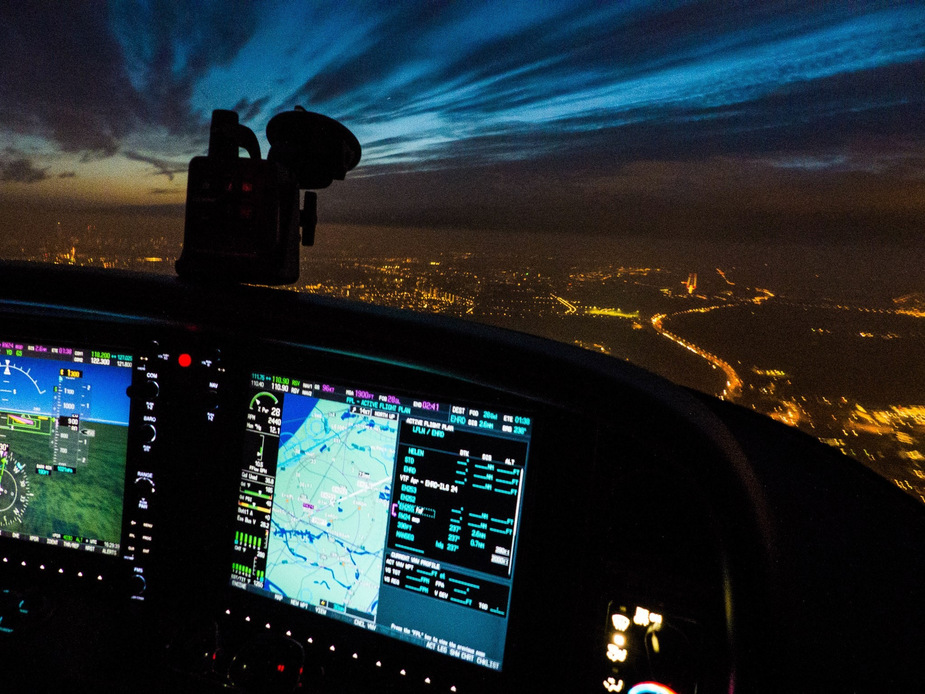Peter wrote:
You can program multiple enroute waypoints, different altitudes for each, and it will automatically climb and descend, no manual intervention at any stage
Peter, the G3000 will climb and descend but I doubt it is desirable to have a plane jinking up and down unconstrained. That is why the ALT select is used as a constraint to limit the up or down movement. As that is one number and not a block with a top and bottom I can’t see how it could require no manual intervention. Some intervention is in my view desirable at least to confirm a move in a direction (up or down). It is a check on mistakes – automatically leaving an altitude is a serious thing in IFR. While I know we are talking VFR, no-one will design a system like this for VFR, you will always be adapting an IFR system.
So the answer to your tightly constrained question is no (AFAIK). But in practice the latest systems will allow it with some minor and desirable manual intervention.
OK, thanks Jason.
Re the Collins kit, apparently it cannot do it for this reason: The FMS will step climb only up to a preset max, and will descend only down to a preset min, and since the max and min are on the same knob…
Maybe the G3000 doesn’t have ALT SEL (or equivalent) but then ALT SEL is there for a good reason, as you say: to exercise the pilot’s brain about what he really wants to do. For example to fly an IAP you have to set the MDA on ATL SEL.
I cannot find a better picture, but here is a picture of the MFD where you can see that you can fill in the Altitude of waypoints. I have never considered or tried using this for enroute waypoints and maybe this could work. I don’t see the point of using this as there is also weather to deal with other than only airspace and … as I am flying IFR enroute most of the time, I don’t have to worry about the A airspace that much.
Below the enroute and approach waypoints you see a VNAV profile section which gives you information about the VNAV profile. There is an issue with the VNAV profile capture. If you don’t capture with within a certain range before or after the intended vertical intercept point, it will not initiate the VNAV profile as it would result in a too steep a descend or too shallow a descend. I am not sure if it also works the other way around in the climb. Never ever tried it.

AeroPlus wrote:
I am not sure if it also works the other way around in the climb. Never ever tried it.
Vertical navigation on the Cirrus Perspective will only ever work on the way down.
In practice, at least in my aircraft, it also separates the planned VNAV (expect to be at FL210 60 miles before Lambourne) from the clearance. I will usually get the first approaching from the East or South into London. But will probably only get stepped clearances. So I set up VNAV with 21000 at LAM-60, and start down either when instructed (descend now FL350), or when the profile says the TOD is (when ready descend FL350). And I will expect further clearances as I descend. With each clearance I change the ALT SELECT.
The VNAV path can be selected to give a particular slope (up to 4 degrees), and depending on groundspeed clearly this equates to an instantaneous rate of descent which changes with TAS and wind during the descent. Should the descent be stopped due traffic below you, you will clearly be above the chose glidepath. You can then do a VNAV DCT to still hit your waypoint at the correct altitude via a computed path angle.
As an aside, the other protection is that if VNAV (arming the VNAV mode) was pressed more than 5 minutes before the TOD, it will flash and require you to reconfirm VNAV before it will start down. This is to prevent someone pressing it, arming it and forgetting it is on. Given I could load a Berlin arrival over Norfolk and an approach, the logic requires you to reconfirm your intent before it starts down the hill. However (assuming ATC goes along with it – not likely in Europe, more so in the US where descend with the arrival is more common) from top of climb over the UK I could load an arrival, and an approach, change my selected altitude to the DH (which would set off Mode-S alerts with ATC) and only touch VNAV once, APR once, flaps, gear and throttles until 200ft.
NCYankee wrote:
The least expensive GPS that can fly the LPV or LNAV/VNAV or +V is the GNS400W. It is the poor cousin of the GNS430W without the VOR/LOC/GS and Com functions
It should read GPS400W instead of GNS should you try to source one… The GPS only version is called GNS, the COM/GPS version is called GNS420, then you get GNS430. The W is added for WAAS models.
The Garmin GTN-625 is the new GPS only uned, as the GPS400W is discontinued.
To be honest, I would think these certified products, although nice is a waste of your budget for this kind of aircraft.
Peter wrote:
can you please post the URL
http://dynonavionics.com/cgi-bin/yabb2/YaBB.pl?num=1362597418